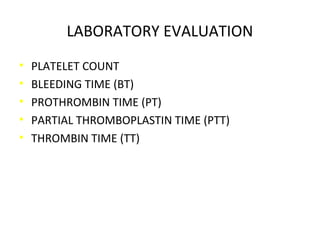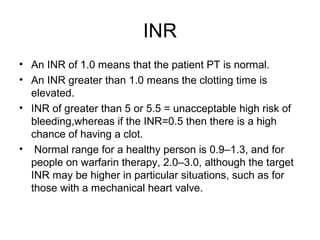When a blood vessel ruptures, platelets collect at the site of injury to form a temporary plug. A series of coagulation factors then interact to convert fibrinogen into fibrin and form a blood clot. Bleeding disorders occur if coagulation factors are deficient or function improperly. The prothrombin time (PT) and partial thromboplastin time (PTT) tests evaluate the intrinsic and extrinsic clotting pathways. An abnormal PT may indicate a deficiency in certain coagulation factors, while an abnormal PTT suggests a platelet or factor deficiency within the intrinsic pathway. Together these tests help diagnose the cause of bleeding disorders.




























